Fasteners Thread Anatomy : Cutting and rolling thread, what are their differences ?
14993 Views |
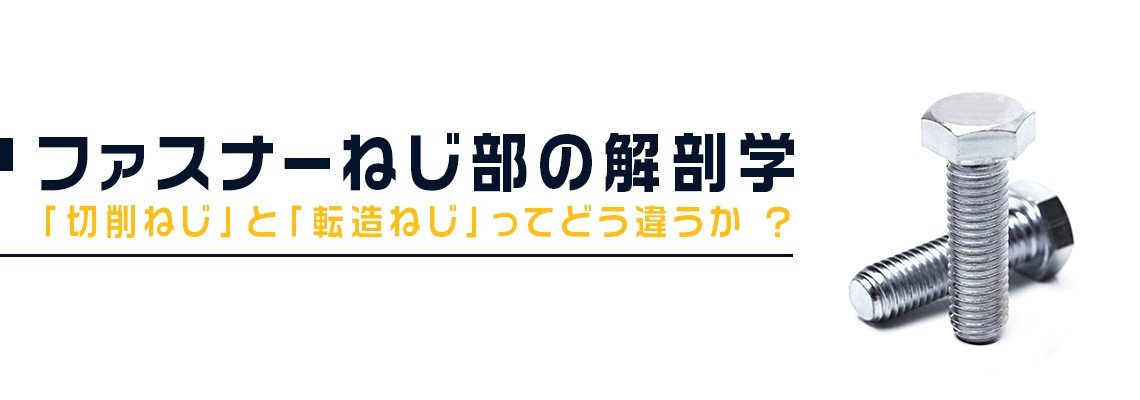
Hello readers! Here we go again for another topic which related to the fasteners thread, Fasteners thread contain several elements before they are formed. So I will pick some interesting topic to share with you guys, of course I will try to explain them into the most easiest way as possible for everyone to be able to understand.
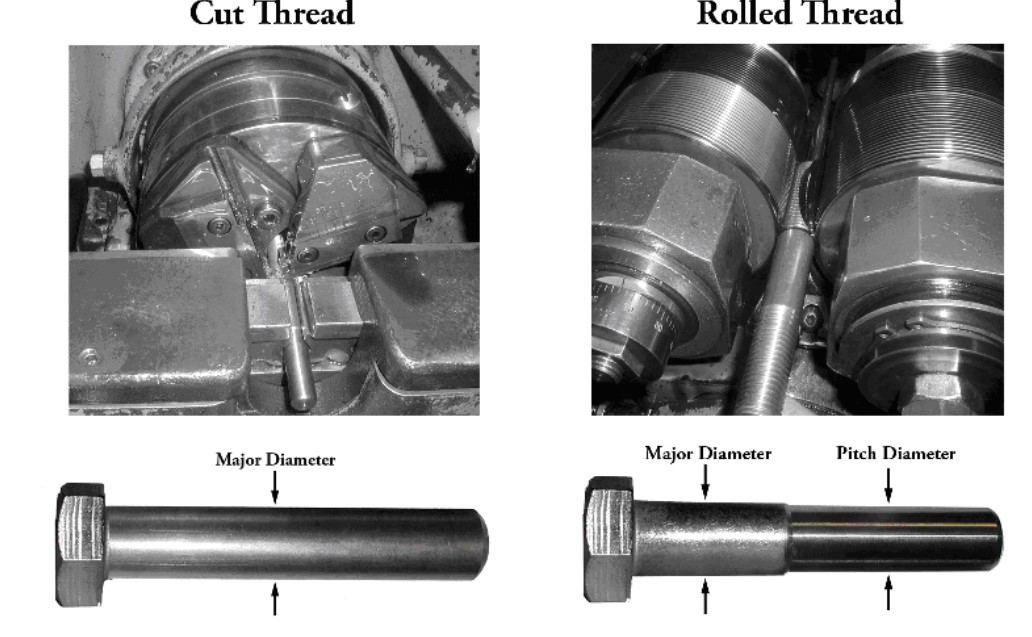
When they formed the fastener in to its semi-finished shape, thread is the last part for machining process. Mostly, there are 2 types of thread making method as below which have their own Pros and Cons.
1. Cutting Thread : This process will take unthreaded fasteners attach to the clamp then using Lathe machine or Cutting die to shear the excessive part of fasteners shank into desired thread form. This process will make fastener lose some of their material surface and grain form. Cutting Thread is generally applied for external thread processing for large diameter or non-standard fasteners but for the Nut, this is normal method to make the internal thread.

Well then, Let`s see its Cutting Thread advantages as below,
- Doesn`t need many tools to make it : Due to this process is using only Clamp, Lathe machine or Cutting die which are common tools/machine in most of manufacturing factories in the world, so any experienced engineer can operate this process at their factory. Common machines can operate most of fasteners sizes thread without excessive special tools needed.

- Suits for urgent use : Due to its need few tools to make Cutting Thread, it can be done within hour in case of few amount by experienced engineer. This is suited for users for who just need only few amounts of fastener which needed to be machined but need to use them urgently.
- Good cost for few quantity : Due to few set up process needed, make this process gain good cost for few quantity due to common tools and machine are compliable, compares to Rolling Thread process.
We have known its advantages as above then, let`s see its disadvantages as below
Higher cost if operate them as mass production : Even its need few process and tools to operate but in case of mass production, this process will take lot of operation time with repeated process.
Strength reduced : Due to cutting process will take some parts of fastener shank away. This will cause fasteners thread lost some of their strength and durability. Only text explanation may unable to make you imagine how it is, then I will demonstrate them into pictures as below to make it better to understand.
Imagine fasteners is your arms, inside your arms there will be a muscle flow. If they are sheared and turned them into specific shape, the arms might lose its strength because of muscle loss.
To describe in detail, for metal material there will be grain flow of material which mostly aligned in horizontal pattern as below picture. During cutting process, lathe turning blades will shear some part of material away which mean, fasteners will lose their organized grain flow. If we use them in high tensile load area, thread may become brittle.
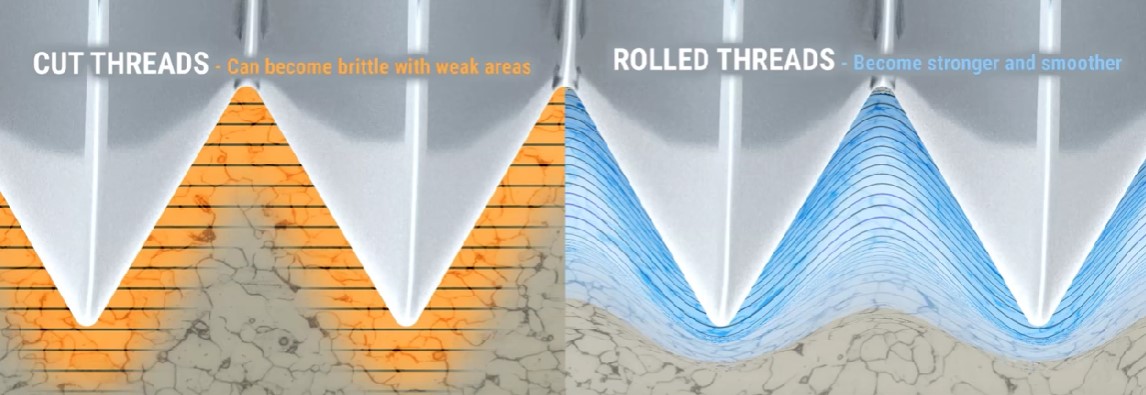
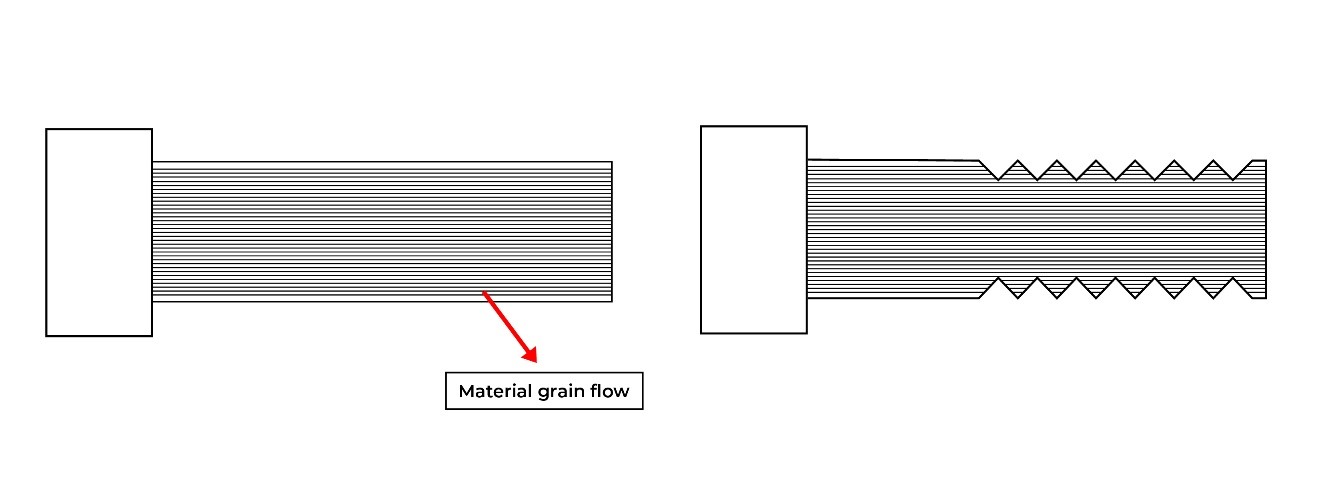
2. Rolling Thread : This process form the thread by reducing their diameter and roll the shank into the thread form by rolling serrated dies. This process need lubrication while operating as well. The dies will apply pressure to the shank and compress them into your desired thread form. Rolling Thread process is generally use for mass production for standard fasteners. This process needed several tools and machines to operate Rolling Thread, each size needed different tools and dies to operate. So this process mostly operate in specialized fasteners company only and also a single company may unable to perform Rolling Thread for all sizes due to their tools and machines restriction.

Let`s see its advantages as below.
Cost saving for mass production : Due to speed of production, make this process suited for mass production which needed continuous feeding process.
Strength, accuracy, and durability : Due to this process will form the thread by compression which make it doesn`t lose any part of its material and grain flow, make it gain better uniform thread dimension, smoother surface, and greater strength.
Let`s see demonstration as below for rolling thread.
Rolling Thread process is a process when fasteners shank attached into designated location between 2 rolling serrated dies, it will compress fasteners shank and turn them into the thread without loosing any material but make grain flow denser and tighter.
This will make the fasteners gain its strength and durability to make them fully perform its functions properly. If your application is tensile and strength concerned, we recommend to use Rolling Thread.
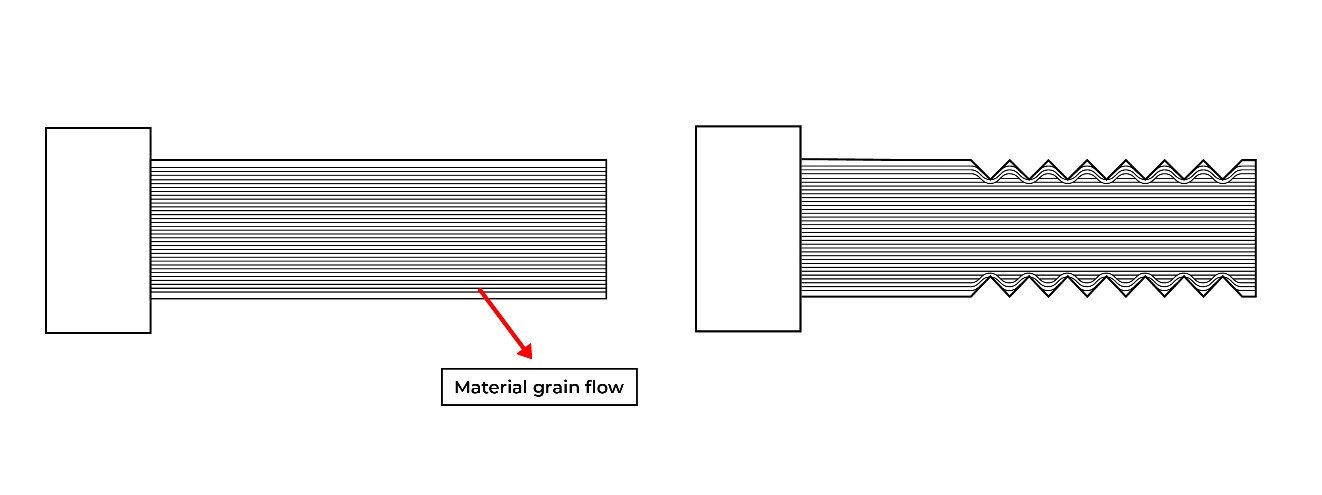
We have seen its advantages, then let`s see its disadvantages as below,
Need more specific machine and tools : Due to this process needs rolling machine with custom dies for each sizes of fasteners, also they need to be lubricating during their operation, made this process gain more cost for the factory who desire to operate this thread form inhouse.
Higher cost for small lot : If you are not fasteners company who are specialized in thread forming, you may not have available dies or tools for most common sizes fasteners but if you want to make rolled thread for them, you may have to purchase necessary tools moreover if you doesn`t have plan to operate this Rolling Thread in long-term, this will cause you an unnecessary cost.
In conclusion, if your application is strength and tensile concerned, please consider to use rolled thread fasteners. Please consult fasteners expert in your area for rolling thread fasteners request.
How was this article? I hope you guys now understand much more about what are the differences between cutting and rolling thread.
This is just one part of Fasteners Thread Anatomy, there are lot of detail about this issue, I will write them in next chance.
I am sorry if information I provided are insufficient or misinformation, I would take this responsibility as myself alone.
Thank you for your time reading our article, please stay tune with us for the next article!
If there are any requested article you would like to read, please inform us!
Written by,
Mr.Nuttapol Sirilert
International Sales Team
Hanshin Neji Co.,Ltd.



